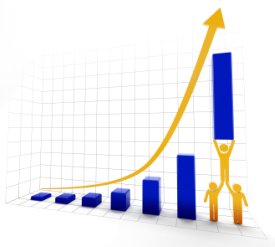Essential elements of the group decision making process
 Having an effective group decision making process can be a major source of productivity improvement for your organization. Some surveys show that nearly 50% of participants consider unfocused projects and meetings as the primary source of lost time and workday productivity. Many of these meetings support group decision making activities. Any improvement in the group decision making process increases value generated from a decision while simultaneously improving organizational productivity.
Having an effective group decision making process can be a major source of productivity improvement for your organization. Some surveys show that nearly 50% of participants consider unfocused projects and meetings as the primary source of lost time and workday productivity. Many of these meetings support group decision making activities. Any improvement in the group decision making process increases value generated from a decision while simultaneously improving organizational productivity.
The first choice - What participation level is needed?
When starting to make a decision, an initial choice should be made regarding the level of collaborative decision making that is needed. This helps determine what is required from the leader and participants to meet decision success criteria, while guiding participation level to achieve commitment to the decision implementation. Additional factors that will influence this choice include the value of the decision, complexity, available time, number of solution alternatives, and level of understanding required for needs/desires.
The Vroom-Yetton-Jago decision tree can also help in choosing the level of involvement with simple responses to eight questions.
Selecting the Process
With participation level determined, a group decision making process should be used to manage the activities and discussions that will generate the decision outcome. The process should:
- plan the decision making which includes defining the success factors or criteria for the decision;
- identify and generate decision alternatives;
- make the decision by selecting the best alternative and;
- manage the decision implementation.
See our decision making process for more information and detail.
Facilitating group decision making activities and discussions
When dealing with larger groups, an effective group decision making process will address how group interactions will be managed and facilitated. This should be addressed in initial planning to ensure that the benefits of group contribution and coordination can be gained at all appropriate steps in the decision making process. Good facilitation can avoid inadequate exchange of relevant information and process losses that are characterized by the meeting surveys mentioned in the opening paragraph.
 Group facilitation or coordination should aim to:
Group facilitation or coordination should aim to:
- Motivate people to perform joint work
- Provide goal clarity
- Structure group discussions and provide explicit coordination where mechanisms are clearly and intentionally described to eliminate any misunderstanding in intention
- Supply information to establish common understanding (such as definition of key terms) and promote appropriate sharing
- Provide mechanisms for information storage, retrieval, sharing, summarization and repetition
- Establish the communication channels needed to satisfy task complexity needs
- Offer methods for reconciliation of conflicting information and the meaning of shared information
- Address social needs for interaction rules (such as equal treatment) and facilitating non-conflicting personal goals
- Promote objectivity, equal participation, and consensus while meeting objectives
- Intervene in crises, maintain order, and resolve emotional conflicts
- Optimize integration of knowledge, opinions and preferences into the collective group decision.
- Make the decision and meet decision making process performance objectives to achieve required decision quality
Various facilitation approaches have been adapted to the group decision making process with different advantages and disadvantages. Examples include the Nominal Group Technique, the Delphi method, Six Thinking Hats® (a parallel thinking process), and the stepladder technique. An important approach for avoiding groupthink captures minority positions, helping to avoid decision making biases, and potentially leading to a different way forward. In addition, many problem decomposition approaches and project management methods have been integrated with individual decision making techniques to address team decision making.
Choosing the group decision making method
In executing the process, it will be necessary to determine the method to be used to combine individual responses and generate specific outcomes. Group decision making methods generally fall into these major approaches:
- Consultation with a single decision maker - The decision group is consulted for information and advice but one person consolidates and makes the final choice.
- Group averaging - The decision is derived from some form of averaging of independent individual selections.
 Voting - A selection is made based on achieving an agreed portion of votes from the group. Multiple rules exist that include majority, super majority (60%, two-thirds), or highest number of votes (winner takes all), and often rules can consider establishing minimum participation for validity.
Voting - A selection is made based on achieving an agreed portion of votes from the group. Multiple rules exist that include majority, super majority (60%, two-thirds), or highest number of votes (winner takes all), and often rules can consider establishing minimum participation for validity.- Consensus - A majority agrees and no one objects.
- Unanimous - All must agree.
There is an amazing amount of research devoted to understanding these various methods, and the group decision making process will be more efficient when specific methods are selected during decision planning using the participation level choice described above.
Tools to support the group decision making process
Software tools can provide significant support for the process by addressing many of the needs identified above. Group decision making techniques are facilitated in many tools, and often incorporate methods for combining individual responses into proven decision making techniques such as Multiple Criteria Decision Analysis (MCDA).
For large groups, complexity in managing communications and tasks can be facilitated with project management tools currently in use within the organization. Once the group decision making process has been defined for the specific decision, look for a tool or tools that will address specific needs for:
- Determining participation level;
- Facilitating group communication;
- Sharing information;
- Combining group input;
- Managing tasks;
- Applying the agreed decision making technique or techniques;
- Recording decision information and;
- Providing needed reports.
Decisions of high value, complexity, and uncertainty may also benefit from expert facilitation or training, particularly if there is the expectation of high emotions and conflict in motivation.

Request Group Decision Making consultation
Return from Group Decision Making Process to Decision Making Process
